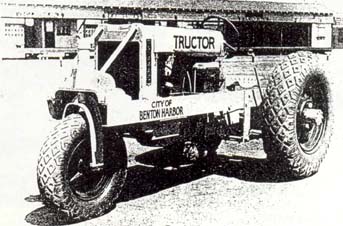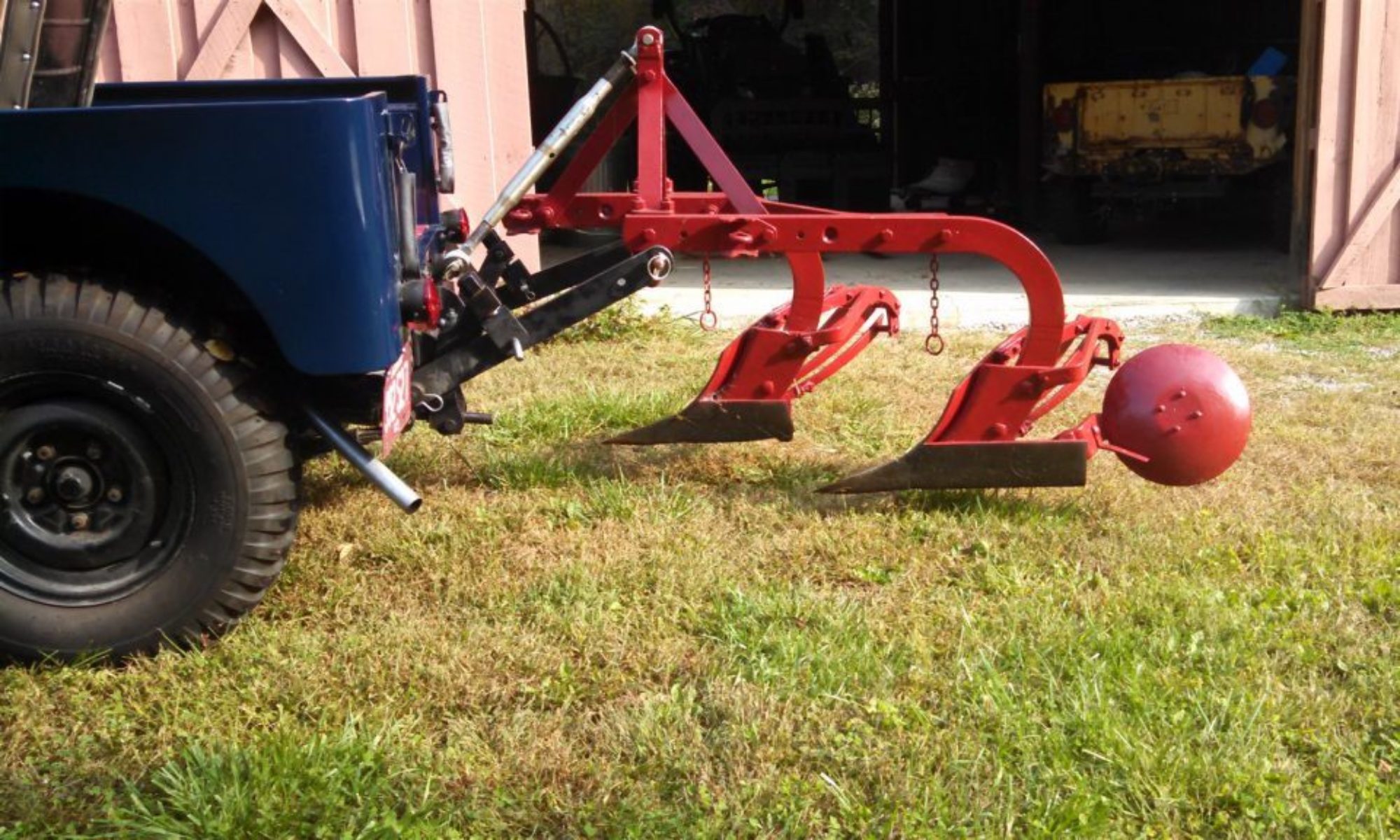
The following is from a 2000 GasEngine article by Robert Hall Jr:1
Jabez Love of Benton Harbor, Michigan, just out of engineering
college for three years, goes to work for Dent Parrett at the
Benton Harbor plant of Ross Carrier Company, manufacturers of
lumber and industrial carriers since 1920. Being located in the
fruit belt of southwestern Michigan, located along Lake Michigan,
all the trees and ground crops are protected by the warm
temperatures of the lake. This in turn created many, many tons of
fruit and vegetables headed for the open market. The farmer had to
haul his fruit to the Benton Harbor Fruit Market, the largest
cash-to-grower market in the United States. The farmer would haul
his fruit and vegetables in baskets and field crates from the
fields and orchards; haul it to the barn, and then reload it onto
his truck for the trip to the market. So at this time, Mr. Love
decided that there had to be an easier way to get the job done. Why
not make a tractor using a car or truck motor, transmission and
rear-end out of a 3-ton truck, and just haul the fruit and
vegetables directly from the orchard and field to the market, with
a tractor?
So, J. B. Love made a tractor out of a model ‘B’ Ford
motor and truck transmission, with a truck rear-end, and called it
a ‘TRUCTOR.’ You could travel at about 40 miles an hour and
save lots of time. Mr. Love made these Tructors from 1933-1936.
(From a discussion on the Antique Tractors Forum) –
“Having worked with Dent Parrett, maker of the Parrett Tractor, Mr. Love used his style of tractor (row crop) and made one very similar to the Parrett, but with a model ‘B’ motor, transmission and rear-end of a Ford truck. At that time tractors were going about 20 miles per hour. So with these changes, Mr. Love made his tractor go 40-plus miles per hour. As the farmers acquired more and more land, their farms became farther apart, and they had to move heavy equipment, such as spray rigs, plows, discs, etc., from one farm to another. It saved them much needed time to be able to move this equipment quicker.
The row crop was short lived, very few of them were made. In 1937 Mr. Love still made the orchard style with the wide front-end, which he had made since 1933. But in 1939, he used the famous new style hood that continued on until the last one was made in 1954, but they still had some to sell three years later and they ended all production by 1960. The Love Manufacturing Plant in Benton Harbor, that had operated since 1933, six years later moved to Eau Claire, Michigan, in 1939.”
From the introduction of the “Tructor”, Love grew his business, but not without setbacks.
Article from Jul 24, 1935 The Herald-Press (Saint Joseph, Michigan)
Love bounces back and at the beginning of 1936 introduces his new company.
Article from Jan 9, 1936 The Herald-Press (Saint Joseph, Michigan)
This newspaper clipping contains a good description of Loves design philosophy –
Article from Jan 1, 1937 The Herald-Palladium (Benton Harbor, Michigan)
Love also earned high praise for his accomplishments as a young business owner.
Article from Jul 29, 1936 The Herald-Palladium (Benton Harbor, Michigan)
Article from Jan 21, 1937 The Herald-Palladium (Benton Harbor, Michigan)
Article from Feb 11, 1937 The Herald-Palladium (Benton Harbor, Michigan)
Article from Mar 4, 1937 The Herald-Press (Saint Joseph, Michigan)
Article from Jan 1, 1938 The Herald-Palladium (Benton Harbor, Michigan)
Love also won awards for his welding skills –
Article from Sep 17, 1938 The Herald-Palladium (Benton Harbor, Michigan)
The $508 prize would equate to almost $11,000 in 2024.
Love introduced his newly design tractor in 1936, but waited until 1946 to obtain a patent. The patent drawings give a good overview of the unique hood design. This was a purpose design to minimize damage to fruit trees while driving. The headlights could be tucked in so as to avoid catching branches and damaging the fruit.
Reading through the newspaper clippings gives you some idea of Love’s approach to tractor design. He developed a tool for the local farmers that began with a tractor capable of road travel. His sheetmetal design addressed the issue of crop damage. He then added a live-PTO for improved sprayer operation, that when combined with the tractors low-speed gearing gave the farmer optimal machine performance for this important task.
Love would carry his engineering and problem solving skills into the next major period of his career.
- Robert Hall Jr., “Love Tractor Story,” Gas Engine Magazine, September 2000, page 14.
↩︎

